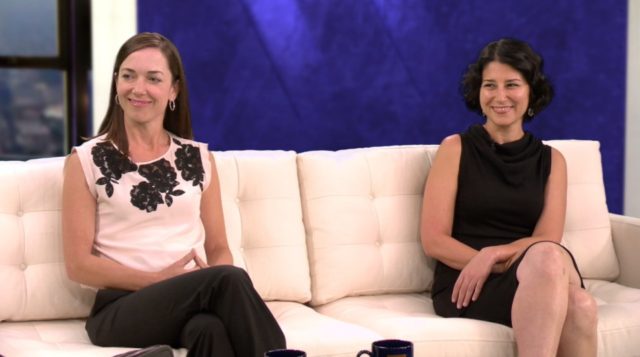In 2013, Hollywood actress Angelina Jolie made headlines after revealing she had genetic testing that showed she was at a high risk of breast and ovarian cancer. The mother of six became part of a medical trend…and decided to have both breasts removed in an effort to reduce the risk of cancer.
“Angelina Jolie’s decision to remove both of her breasts, before being diagnosed with breast cancer, was a primary preventive strategy,” explained UCLA’s director of the Breast Oncology Program, Dr. Sara Hurvitz.
Since then Jolie’s also had her ovaries and fallopian tubes removed in a preventative surgery against ovarian cancer.

Full Frame: Impact of ‘Jolie effect’ on genetic testing for breast, ovarian cancer
In 2013, Hollywood actress Angelina Jolie made headlines after revealing she had genetic testing that showed she was at a high risk of breast and ovarian cancer. The mother of six became part of a medical trend…and decided to have both breasts removed in an effort to reduce the risk of cancer.UCLA gynecologic cancer surgeon Dr. Sanaz Memarzadeh, who conducts extensive research on ovarian cancer, says for some woman who test positive for the genetic mutations, preventative surgery makes sense since good, early detection tests don’t yet exist.
“Knowledge is power for women,” said Dr. Memarzadeh. “It’s important to know if women carry this genetic mutation, particularly in the case of ovarian cancer.”
In the past decade, doctors are seeing more and more women, who, like Jolie, have a genetic mutation, choosing to remove healthy breasts instead of having breast‐conserving surgeries, even though both procedures offer the same odds of survival. Is this a good thing? And what options do women have?
Physicians Sara Hurvitz and Sanaz Memarzadeh joined Mike Walter in our Los Angeles studio to offer their insight.
 CGTN America
CGTN America UCLA’s director of the Breast Oncology Program, Dr. Sara Hurvitz and UCLA gynecologic cancer surgeon Dr. Sanaz Memarzadeh discuss genetic testing for ovarian and breast cancer.
UCLA’s director of the Breast Oncology Program, Dr. Sara Hurvitz and UCLA gynecologic cancer surgeon Dr. Sanaz Memarzadeh discuss genetic testing for ovarian and breast cancer.
